Car
-
- D r e w r y Report R e v i e w s C a r - C a r r y i n g Fleet Maritime Reporter, May 1977 #42
A sector of the shipping industry which has been experiencing buoyant conditions recently is that concerned with the transport of assembled (or built-up) motor vehicles — principally passenger cars, but also trucks and other commercial vehicles shipped by sea. Over the past two to three years, the car-carrying fleet, which is a sizable one, has been fully employed, owners enjoying profitable freight rates. Yet world vehicle production and trade went into decline with the "Oil Crisis" and the onset of the economic slump, and have yet to recover to 1973 levels, as the latest study from H.P. Drewry (Shipping Consultants) Limited reveals.
Car-carrying capacity—which, in standard vehicle units is over 700,000 cars—was stretched by the extension of vehicle trade to newer markets and a general lengthening of transport distances.
The most important single factor was the growth of Japanese exports, notably to Western Europe and the U.S., but also to most other markets. Passenger car shipments alone rose from 1.4 million units in 1974 to 1.8 million in 1975 and some 2.4 million in 1976, and are still growing.
With the shift away from the North American market, firstly toward Western Europe and then to newer markets in Asia and Africa, the extension of world car trade has precipitated a large increase in the capacity of the car-carrying fleet. The Drewry study, entitled "The Growth of the Car-Carrying Fleet," reveals that there are over 350 ships in service which have been specially built, or converted, for the purpose of transporting complete assembled passenger cars and other vehicles on the longer ocean routes, and full details of the fleet are given in an appendix to the study, which lists car carriers with a capacity of 1,000 or more vehicles. In addition, there are many other smaller vessels, mainly specialized, operating on shortsea routes, or in coastal services, carrying cars.
A variety of ship types — including hybrid, or "Combo" car carriers—are actually utilized for car transport, and these are described in the study, issued as No. 52 in a series. The greater part of the deepsea fleet, however, comprises two distinct types.
These are, respectively, car/bulk carriers fitted with portable decks and the fixed-deck car transporter (referred to in the Drewry study as pure car carriers, or "PCC's").
Each sector of the fleet is reviewed in Part 2, commencing with short-sea types and ending with an assessment of the role of multipurpose cargo ships. The structure of the world fleet is fully analyzed in the study, in order to show its capacity, what sizes of ship are in operation, how old they are, and by whom they are owned or operated.
Extensive reference is also made, within the study, to the deployment of the deepsea fleet by type and how the available capacity represented by the different sections of the fleet has been utilized — particularly the changing role of the PCC, which employs roll-on/roll-off handling rather than the lift-on/lift-off methods used by car-bulk carrier operators.
The past growth of the fleet was supported by the extension of sea trade in built-up, fully assembled cars, and the 74-page study concludes with an extensive review of long-term trends in world car-production and trade, in order to assess the prospects for the fleet. Particular emphasis is placed on the North American market and sales of imported cars, and also on the ability of the Japanese car industry to increase export sales to this and other world markets. On the basis of visible trends within the industry — particularly increased local assembly—one conclusion is that the existing fleet, plus ships on order, will probably be adequate to meet the forecast increase in trade in built-up passenger cars, although much will depend on the shipment of vehicles in knockdown form.
"The Growth of the Car-Carrying Fleet," No. 52 in a series of reports on various aspects of shipping prepared by the Research Division of H.P. Drewry (Shipping Consultants) Limited, 34, Brook Street, Mayfair, London W1Y 2LL, England, is available at a single copy rate of $75 (all overseas orders), or on a subscription basis $275 (all overseas orders), for the series 51-60.
-
- Car Ferry Saves Fuel with New Engines Maritime Reporter, Feb 2004 #37
Northern Norway has a large fleet of small and mid-size boats for commercial operations, for example, passenger boats, car ferries and a multitude of fishing boats. These are boats that operate year around and that at regular intervals need to replace their engines. The high-speed passenger boat
-
- AESA To Build Car/Passenger Ferry For Moroccan Owner Maritime Reporter, Feb 1991 #66
Moroccan shipowner Limadet (Lignes Maritimes du Detroit) has ordered a car/passenger ferry from Spanish shipbuilder Astilleros Espanoles, S.A. (AESA) for service between Morocco and Spain across the Strait of Gibraltar. The ferry, which will be built by H.J. Barreras, the Vigo-based yard of the
-
- Fincantieri Delivers Rail/Car/Passenger Ferry To Italian State Railways Maritime Reporter, Apr 1989 #6
The Palermo shipyard of Fincantieri recently delivered the rail/car/ passenger ferry Logudoro to the Italian State Railways. The ferry is now in service between Civitavecchia, near Rome, to Golfo Aranci in Sardinia, and between Messina, in Sicily, and Reggio Calabria. Built to the rules of Registro
-
- Meyer Werft Books Order To Convert Car Carrier Into Livestock Carrier Maritime Reporter, Apr 1989 #46
The Meyer Werft of Papenburg, West Germany, a leader in the conversion of cargo vessels and tankers into livestock carriers, recently received an order from the Dutch shipowner Vroon B.V., Breskens, to convert the car carrier Mediterranean Highway into a sheep/cattle carrier to be named Cormo Express.
-
- Wallenius Transferring Large Car Carrier To U.S. Flag Maritime Reporter, Aug 1988 #20
Wallenius Lines, Stockholm, Sweden, recently announced that the 52,000-grt pure car/truck carrier (PCTC) Faust will transfer from the Swedish flag to the U.S. flag later this year. Faust is one of the largest and most modern vessels in the Wallenius fleet. She can carry 6,380 cars or 3,200 cars and
-
- Hitachi Zosen Delivers 48,000-Gross-Ton Car Carrier Overseas Joyce Maritime Reporter, Jan 1988 #50
The 48,000-gross-ton motor car carrier Overseas Joyce was recently completed at Hitachi Zosen's Ariake Works and subsequently delivered to the owner, OSG Car Carriers, Inc. The vessel, which can carry a total of 5,300 cars, is designed to transport microbuses, large buses and forklifts, in addition to
-
- Kockums Completes Advanced Car/Truck Carrier For Wallenius Maritime Reporter, Sep 15, 1985 #33
The pure car/truck carrier Isolde has been delivered by Kockums AB of Malmo, Sweden, to Wallenius Lines of Stockholm. With a capacity of 6,230 passenger cars or a combination of 2,930 cars and 540 heavy vehicles, the new ship has an overall length of 649.6 feet, beam of 105.9 feet, depth to weather
-
- Big Car Carrier Delivered By Hitachi Zosen's Hiroshima Yard Maritime Reporter, May 1985 #17
The 16,770-dwt motor car carrier Nissan Laurel (shown) was completed recently at Hitachi Zosen's Hiroshima Works and delivered to Intercontinenal Car Carriers S.A. of Panama. The ship, which can carry a total of 4,900 Japanese-size cars, has an overall length of 590.5 feet, beam of 105.8 feet
-
- Seebeckwerft Delivers World's Largest Railway/Car Ferry Maritime Reporter, Dec 15, 1984 #8
Seebeckwerft AG in Bremerhaven, Germany, formerly the AG 'Weser' yard, recently delivered the Railship II, said to be the largest train/car ferry in the world. The new vessel is now in service between Travemunde, on the Baltic Coast of West Germany, and Hango in Finland. Railship II was designed and
-
- Hitachi Zosen Shipyard Delivers 53,538-Dwt Car/Bulk Carrier Maritime Reporter, Feb 15, 1983 #49
The Co-Op Express II, a 53,538-dwt car/ bulk carrier was delivered recently from the Maizuru shipyard of Hitachi Zosen to Kumiai Senpaku Co., Ltd. of Japan. It is a sistership of Co-Op Express I delivered by Hitachi in September 1982. The ship has a total of nine cardecks in all five holds and is
-
- Hitachi Zosen Delivers Car Carrier Toyofuji 7 Maritime Reporter, Nov 1981 #59
The 10,848-dwt, diesel-powered vehicle carrier Toyofuji 7 (shown above) was delivered recently to Toyofuji Kaiun Kaisha, Ltd. of Japan by Hitachi Zosen, Tokyo. The ship was built at the Setoda Shipyard of Naikai Zosen, a Hitachi affiliate. The vessel is 178 meters long by 29 meters wide by 26.2
-
 )
March 2024 - Marine Technology Reporter page: 41
)
March 2024 - Marine Technology Reporter page: 41systems to accommodate a broader range of instruments while maintain- Images courtesy MTR ing operational ef? ciency. The new generation Quadroin now carries an expanded and video feeds live during the mission with processing car- instrument payload. The side-scan sonar enables acous- ried out onboard
-
 )
April 2024 - Maritime Reporter and Engineering News page: 43
)
April 2024 - Maritime Reporter and Engineering News page: 43tection. The work would also demand a regulations to help digitalization nurture scaling-up of solutions. review of SOLAS formulations for the decarbonization. New energy saving devices, alterna- design, planning and testing of ships, “I don't say that crews must be soft- tive fuels, carbon capture
-
 )
April 2024 - Maritime Reporter and Engineering News page: 13
)
April 2024 - Maritime Reporter and Engineering News page: 13that is a pointless exercise. It would actually make more cal sequence: sense to buy a plug-in hybrid that is con? gured for methanol It is the carbon. We want zero carbon as soon as possible. 1. IC, but, unfortunately, no such cars are being produced today. A Focus on sustainable electricity
-
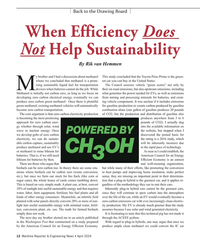 )
April 2024 - Maritime Reporter and Engineering News page: 12
)
April 2024 - Maritime Reporter and Engineering News page: 12and I had a discussion about methanol This study concluded that the Toyota Prius Prime is the green- where we concluded that methanol is a prom- est car you can buy in the United States. ising sustainable liquid fuel for transportation The Council assesses vehicle “green scores” not only by Mdevices
-
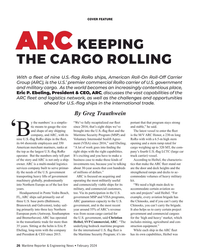 )
February 2024 - Maritime Reporter and Engineering News page: 26
)
February 2024 - Maritime Reporter and Engineering News page: 26COVER FEATURE ARC KEEPING THE CARGO ROLLING With a ? eet of nine U.S.-? ag RoRo ships, American Roll-On Roll-Off Carrier Group (ARC), is the U.S.’ premier commercial RoRo carrier of U.S. government and military cargo. As the world becomes an increasingly contentious place, Eric P. Ebeling, President
-
 )
February 2024 - Maritime Reporter and Engineering News page: 11
)
February 2024 - Maritime Reporter and Engineering News page: 11and costs. that issue. One may argue that one human with a bigger truck These 5-foot wide units will zip through the city much faster can deliver more cargo than one human with a smaller truck, and easier than conventional cars and if they become ubiqui- but in a city like NYC even that argument holds
-
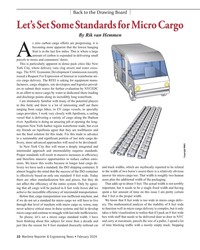 )
February 2024 - Maritime Reporter and Engineering News page: 10
)
February 2024 - Maritime Reporter and Engineering News page: 10Back to the Drawing Board Let’s Set Some Standards for Micro Cargo By Rik van Hemmen s zero carbon cargo efforts are progressing, it is becoming more apparent that the lowest hanging fruit is in the last few miles. This is where a large amount of carbon is expended in delivering small A parcels to
-
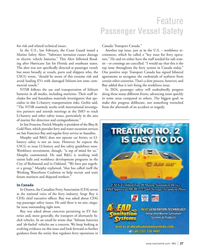 )
February 2024 - Marine News page: 27
)
February 2024 - Marine News page: 27Fleet, which provides ferry and water excursion services on San Francisco Bay and regular ferry service to Sausalito. Murphy said B&G does not operate car ferries, so LI- battery safety is not an issue. However, he expects the USCG to issue LI-battery and ? re safety guidelines soon. Workforce recruitment
-
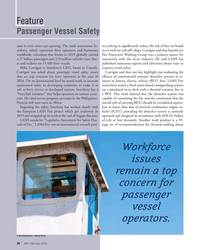 )
February 2024 - Marine News page: 26
)
February 2024 - Marine News page: 26ferry operators and businesses ro-ro (roll on–roll off) ships. Corrigan said that Interferry’s worldwide, calculates that ferries in 2019 globally carried Fire Protection Working Group was a primary source for 4.27 billion passengers and 373 million vehicles (cars, bus- interaction with the ro-ro
-
 )
January 2024 - Marine Technology Reporter page: 14
)
January 2024 - Marine Technology Reporter page: 14to the daily management, enabling our people a comprehensive project management process. to think about the longer-term strategic goals of reducing car- 14 January/February 2024 MTR #1 (1-17).indd 14 1/31/2024 12:59:33 P
-
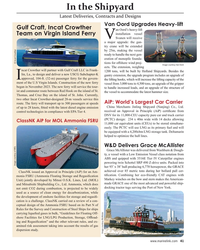 )
January 2024 - Maritime Reporter and Engineering News page: 41
)
January 2024 - Maritime Reporter and Engineering News page: 41hammer size. Thomas, and Cruz Bay on the island of St. John. Currently, two other Incat Crowther-designed 28-m vessels service this AiP: World’s Largest Car Carrier route. The ferry will transport up to 300 passengers at speeds China Merchants Jinling Shipyard (Nanjing) Co., Ltd. of up to 28 knots, ?
-
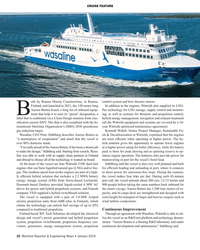 )
January 2024 - Maritime Reporter and Engineering News page: 32
)
January 2024 - Maritime Reporter and Engineering News page: 32agreement). gas reduction target. Kenneth Widell, Senior Project Manager, Sustainable Fu- Wasaline CEO Peter Ståhlberg describes Aurora Botnia as els & Decarbonization at Wärtsilä, explained that the engines “a masterpiece of cooperation” and noted that the vessel is are most ef? cient when operating at
-
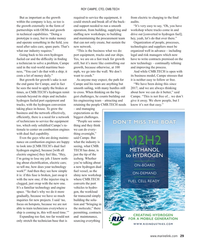 )
January 2024 - Maritime Reporter and Engineering News page: 29
)
January 2024 - Maritime Reporter and Engineering News page: 29do that over there.” and operate something in the feld, you that can not only create, but sustain the Organization of people, processes, need after sales care, spare parts. That’s new network. technologies and suppliers must be what our industry requires.” “This is the business what we do: organized well
-
![MR Jan-24#28 we started designing our cargo
know the cost of a [hydrogen]](https://images.marinelink.com/images/magazines/w200h250c/MaritimeReporter-202401-page30.png) )
January 2024 - Maritime Reporter and Engineering News page: 28
)
January 2024 - Maritime Reporter and Engineering News page: 28with hydrogen, particularly in large quantities. but [for example] not many people company’s vessels – regardless of sec- “So we started designing our cargo know the cost of a [hydrogen] compres- tor – can ful? ll their contracts. vessels and we decided, ‘OK, let’s sor; how it works; how you maintain
-
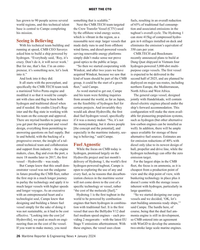 )
January 2024 - Maritime Reporter and Engineering News page: 26
)
January 2024 - Maritime Reporter and Engineering News page: 26daily runs to and from offshore eliminates the emission’s equivalent of running at speed, CMB CEO Saverys wind farms, and diesel-powered vessels 350 cars per year. asked him to build a ship powered by serving renewable energy platforms CMB.TECH and Boeckmans hydrogen. “Everybody said, ‘Roy, it’s
-
 )
January 2024 - Maritime Reporter and Engineering News page: 20
)
January 2024 - Maritime Reporter and Engineering News page: 20TECH FEATURE Figure 4. The vessel’s cargo holds feature Figure 5. The walls of the cargo holds All images courtesy of The Interlake Steamship Company ? at bottoms that accommodate the use bene? t from a zinc-based coating that of heavy machinery, which necessitated provides durability in an area
-
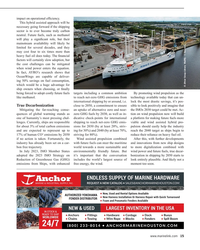 )
January 2024 - Maritime Reporter and Engineering News page: 15
)
January 2024 - Maritime Reporter and Engineering News page: 15impact on operational ef? ciency. This hybrid assisted approach will be necessary going forward if the shipping sector is to ever become truly carbon neutral. Future fuels, such as methanol will play a signi? cant role, but their mainstream availability will likely be limited for several decades
-
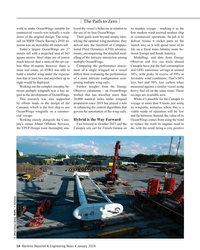 )
January 2024 - Maritime Reporter and Engineering News page: 14
)
January 2024 - Maritime Reporter and Engineering News page: 14. square meters. Steel ships are of course elling of the intricate interaction among Modelling, and data from Energy much heavier than a state-of-the-art car- multiple OceanWings. Observer and live sea trials aboard bon ? ber tri-maran, however there is Comparing the performance assess- Canopée have put
-
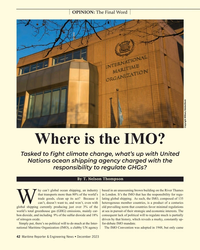 )
December 2023 - Maritime Reporter and Engineering News page: 42
)
December 2023 - Maritime Reporter and Engineering News page: 42currently producing just over 3% of the old prevailing norm that countries favor minimal regulations world’s total greenhouse gas (GHG) emissions, mainly car- at sea in pursuit of their strategic and economic interests. The bon dioxide, and including 9% of the sulfur dioxide and 18% consequent lack of
-
 )
December 2023 - Maritime Reporter and Engineering News page: 38
)
December 2023 - Maritime Reporter and Engineering News page: 38? eet, the MISC welcomed two of its latest new generation of Lique- ? rst ship of its new Hamburg Express class and the ? rst of a ? ed Natural Gas (LNG) carriers, Seri Damai and Seri Daya dozen large container ships will be put into service by 2025. to its ? eet of LNG carriers. These 174,000 CBM LNG
-
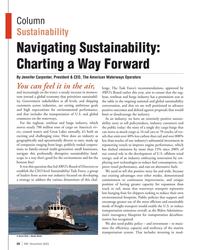 )
November 2023 - Marine News page: 20
)
November 2023 - Marine News page: 20Column Sustainability Navigating Sustainability: Charting a Way Forward By Jennifer Carpenter, President & CEO, The American Waterways Operators You can feel it in the air, lenge. The Task Force’s recommendations, approved by and increasingly on the water: a steady increase in momen- AWO’s Board
-
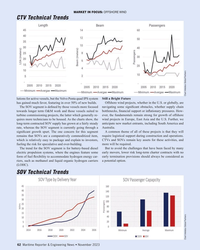 )
November 2023 - Maritime Reporter and Engineering News page: 62
)
November 2023 - Maritime Reporter and Engineering News page: 62, where the engines feature some early movers, lower risk long-term charter contracts with no form of fuel ? exibility to accommodate hydrogen energy car- early termination provisions should always be considered as riers, such as methanol and liquid organic hydrogen carriers a potential option. (LOHC)
-
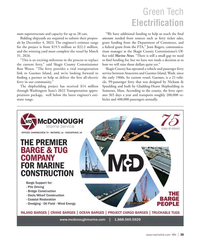 )
October 2023 - Marine News page: 39
)
October 2023 - Marine News page: 39Green Tech Electri? cation num superstructure and capacity for up to 28 cars. “We have additional funding to help us reach the ? nal Bidding shipyards are required to submit their propos- amount needed from sources such as ferry ticket sales, als by December 4, 2023. The engineer’s estimate range grant
-
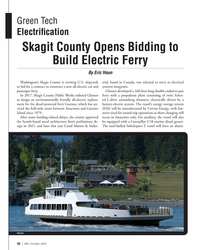 )
October 2023 - Marine News page: 38
)
October 2023 - Marine News page: 38Skagit County is inviting U.S. shipyards trial, based in Canada, was selected to serve as electrical to bid for a contract to construct a new all-electric car and systems integrator. passenger ferry. Glosten developed a 160-foot-long double ended ro-pax In 2017, Skagit County Public Works enlisted Glosten
